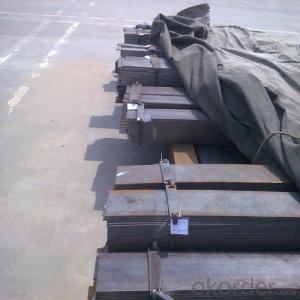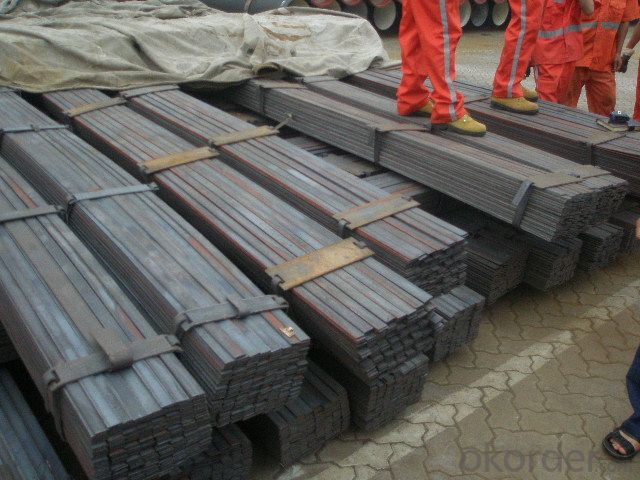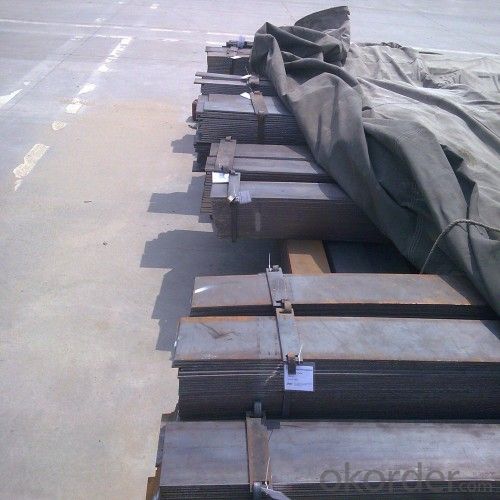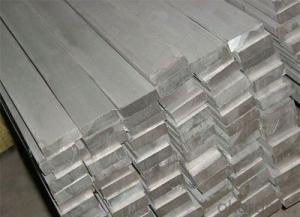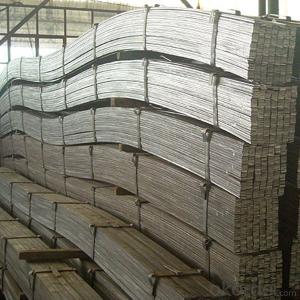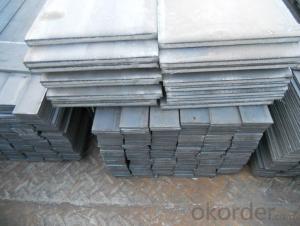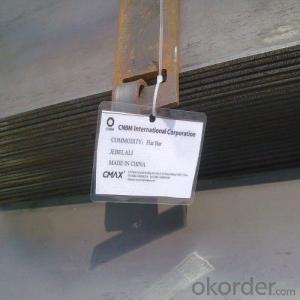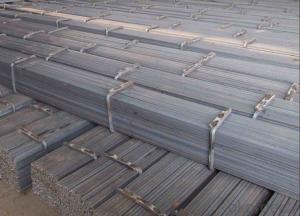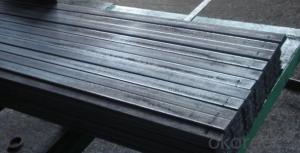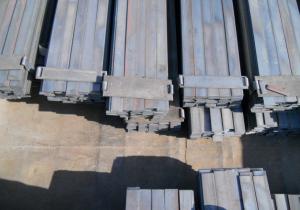Slit Cutting Flat Bar with Material Grade Q235
- Loading Port:
- Tianjin
- Payment Terms:
- TT OR LC
- Min Order Qty:
- 25 m.t
- Supply Capability:
- 10000 m.t/month
OKorder Service Pledge
OKorder Financial Service
You Might Also Like
OKorder is offering high quality Slit Cutting Flat Bar at great prices with worldwide shipping. Our supplier is a world-class manufacturer of steel, with our products utilized the world over. OKorder annually supplies products to European, North American and Asian markets. We provide quotations within 24 hours of receiving an inquiry and guarantee competitive prices.
Product Applications:
Slit Cutting Flat Bars are ideal for structural applications and are widely used in the construction of buildings and bridges, and the manufacturing, petrochemical, and transportation industries.
Product Advantages:
OKorder's Slit Cutting Flats Barare durable, strong, and resist corrosion.
Main Product Features:
· Premium quality
· Prompt delivery & seaworthy packing (30 days after receiving deposit)
· Corrosion resistance
· Can be recycled and reused
· Mill test certification
· Professional Service
· Competitive pricing
Product Specifications:
Manufacture: Slit Cutting
Grade: Q195 – 235
Certificates: ISO, SGS, BV, CIQ
Length: 6m – 12m, as per customer request
Packaging: Export packing, nude packing, bundled
Chemical composition of Q235
Alloy No | Grade | Element(%) | ||||
C
| Mn
| S
| P
| Si
| ||
Q235
|
B
|
0.12—0.20 |
0.3—0.7 |
≤0.045 |
≤0.045
|
≤0.3
|
Physical properties of Q235
Alloy No | Grade | Yielding strength point(Mpa) | Tensile strength (Mpa) | Elongation after fracture(%) | ||||||
Thickness (mm) | Thickness (mm) | |||||||||
≤16 | >16--40 | >40--60 | >60--100 | ≤16 | >16--40 | >40--60 | >60--100 | |||
≥ | ≥ | |||||||||
Q235 |
B |
235 |
225 |
215 |
205 |
375--500 |
26 |
25 |
24 |
23 |
FAQ:
Q1: Why buy Materials & Equipment from OKorder.com?
A1: All products offered byOKorder.com are carefully selected from China's most reliable manufacturing enterprises. Through its ISO certifications, OKorder.com adheres to the highest standards and a commitment to supply chain safety and customer satisfaction.
Q2: How do we guarantee the quality of our products?
A2: We have established an advanced quality management system which conducts strict quality tests at every step, from raw materials to the final product. At the same time, we provide extensive follow-up service assurances as required.
Q3: How soon can we receive the product after purchase?
A3: Within three days of placing an order, we will begin production. The specific shipping date is dependent upon international and government factors, but is typically 7 to 10 workdays.
Images:
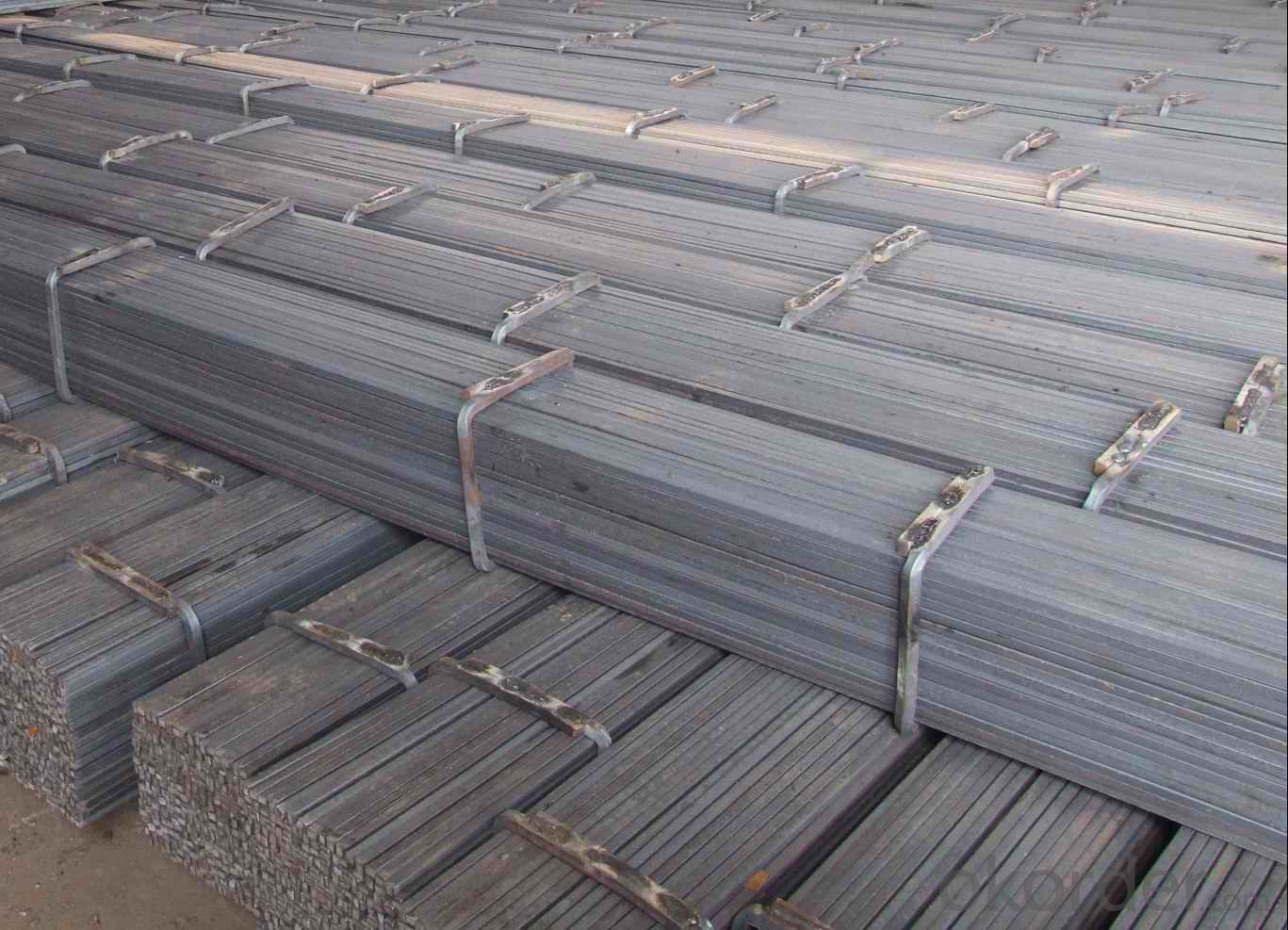
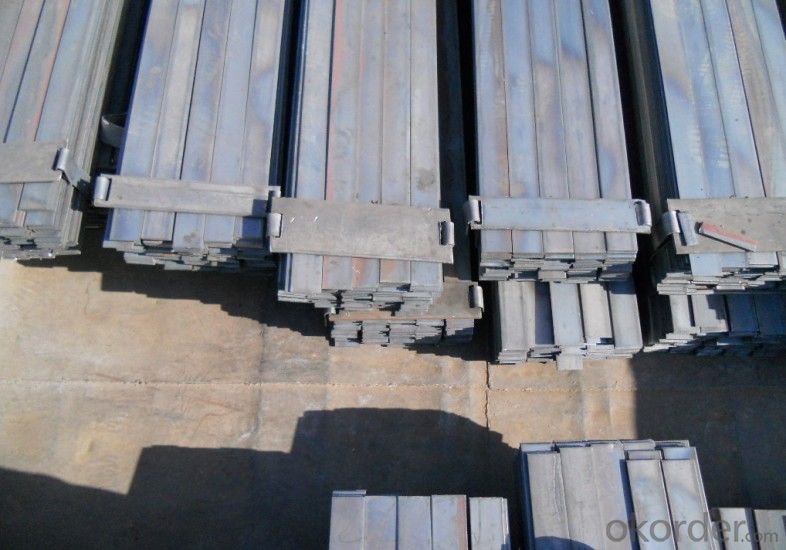
- Q: Can steel flat bars be used for DIY projects?
- Absolutely, DIY projects can definitely make use of steel flat bars. These bars are extremely versatile and lend themselves well to cutting, drilling, and welding, making them perfect for a wide range of DIY applications. Whether you're constructing shelves, brackets, furniture frames, or even support beams, steel flat bars are an excellent choice. Not only are they incredibly strong and durable, providing stability and longevity to your projects, but they also come in various sizes and thicknesses, allowing you to select the perfect dimensions for your specific DIY needs. Regardless of whether you're a novice or a seasoned DIY enthusiast, steel flat bars offer a fantastic solution for your next undertaking.
- Q: Can steel flat bars be used in food processing industries?
- No, steel flat bars are not typically used in food processing industries as they can corrode over time and contaminate the food. Stainless steel is the preferred material due to its corrosion resistance and hygienic properties.
- Q: Can steel flat bars be used for manufacturing agricultural implements?
- Yes, steel flat bars can be used for manufacturing agricultural implements. Steel is a strong and durable material that is suitable for a variety of applications, including agricultural machinery. Flat bars can be used to create the framework or structural components of the agricultural implements, such as plows, cultivators, and harrows. The flat shape of the bars allows for easy fabrication and welding, making it a versatile choice for manufacturing. Additionally, steel flat bars can be heat-treated or galvanized to enhance their strength and resistance to corrosion, ensuring that the agricultural implements will withstand the harsh conditions of farming and last for a long time.
- Q: Can steel flat bars be used for making security gates?
- Absolutely! When it comes to crafting security gates, steel flat bars are an ideal choice. Steel, renowned for its durability and strength, offers exceptional security and protection. Notably, flat bars can be effortlessly welded or bolted together, enabling the creation of a robust gate structure. Furthermore, steel flat bars possess corrosion resistance and can endure harsh weather conditions, rendering them perfect for outdoor applications. By employing steel flat bars, security gates can be constructed to deliver a top-notch level of security, guaranteeing the safety of any property or premises.
- Q: What are the different surface finishes for steel flat bars?
- There are several different surface finishes available for steel flat bars, each with its own unique properties and benefits. Some of the most common surface finishes for steel flat bars include: 1. Hot Rolled: This is the most basic surface finish, where the steel is heated and then rolled through a series of rollers to achieve the desired shape. This finish is characterized by a rough and textured surface, with visible mill scale. It is often used for structural applications where appearance is not a primary concern. 2. Cold Rolled: In this process, the steel is rolled at room temperature, resulting in a smoother and more precise finish. Cold rolled steel flat bars have a clean and smooth surface, making them suitable for applications where aesthetics are important, such as furniture or decorative pieces. 3. Galvanized: Galvanizing is a process in which the steel flat bars are coated with a layer of zinc to protect them from corrosion. This finish provides excellent corrosion resistance and durability, making it ideal for outdoor applications or in environments with high moisture or chemical exposure. 4. Polished: Steel flat bars can also be polished to achieve a shiny and reflective surface. This finish is often used in architectural or decorative applications, where a sleek and modern appearance is desired. Polished steel flat bars can be further treated with coatings or protective films to enhance their durability and resistance to scratches or stains. 5. Brushed: Brushing is a surface treatment that creates a pattern of fine lines on the steel surface, giving it a textured and matte appearance. This finish is commonly used in applications where a decorative yet non-reflective surface is desired, such as signage or interior design. It is important to consider the specific requirements and intended use of the steel flat bars when selecting the appropriate surface finish. Each finish offers different aesthetic qualities, corrosion resistance, durability, and ease of maintenance, allowing for a wide range of options to suit various applications.
- Q: Can steel flat bars be bent or formed?
- Yes, steel flat bars can be bent or formed. Steel is a highly versatile and malleable material, which means it can be easily manipulated to take on different shapes. The process of bending or forming steel flat bars typically involves applying force to the bar, either through mechanical means or through the use of heat. This force allows the steel to be bent or shaped into various angles or curves, depending on the desired outcome. Bending or forming steel flat bars is a common practice in various industries, including construction, manufacturing, and metalworking.
- Q: How do steel flat bars contribute to the overall safety of a structure?
- Steel flat bars contribute to the overall safety of a structure by providing strength, stability, and structural integrity. These bars are known for their high tensile strength, which makes them capable of bearing heavy loads and resisting bending or warping. They are often used as structural supports, braces, or reinforcement in various building applications, such as beams, frames, and trusses. By adding steel flat bars to a structure, it increases its ability to withstand external forces, such as wind, earthquakes, or heavy loads, reducing the risk of structural failure and ensuring the safety of the occupants.
- Q: Can steel flat bars be used for making brackets or supports for agricultural machinery?
- Yes, steel flat bars can be used for making brackets or supports for agricultural machinery. Steel flat bars are known for their strength and durability, making them suitable for heavy-duty applications in the agricultural industry. They can be easily formed or welded to create custom brackets or supports that can withstand the harsh conditions and heavy loads commonly encountered in agricultural machinery. Additionally, steel flat bars are readily available in various sizes, allowing for flexibility in design and application.
- Q: Can steel flat bars be used for making food processing equipment?
- Steel flat bars can be used for making food processing equipment, as long as they are made from food-grade stainless steel. Food-grade stainless steel is specifically designed to be safe for contact with food and is resistant to corrosion, staining, and bacterial growth. It is commonly used in the food industry for various equipment such as worktables, shelves, conveyors, and processing machines. The smooth and flat surface of steel flat bars makes them easy to clean and maintain, ensuring hygiene and preventing contamination. However, it is important to ensure that the steel flat bars used in food processing equipment comply with relevant food safety regulations and standards to ensure the safety and quality of the processed food.
- Q: Are steel flat bars suitable for welding projects?
- Yes, steel flat bars are suitable for welding projects. Steel flat bars are commonly used in welding projects due to their versatility and strength. They have a flat surface which makes them easy to work with and weld, allowing for precise and strong connections. Steel flat bars are available in various sizes and thicknesses, making them suitable for different types of welding projects. Additionally, steel is known for its durability and resistance to heat, which are important factors in welding. Overall, steel flat bars are a reliable and commonly used material for welding projects.
Send your message to us
Slit Cutting Flat Bar with Material Grade Q235
- Loading Port:
- Tianjin
- Payment Terms:
- TT OR LC
- Min Order Qty:
- 25 m.t
- Supply Capability:
- 10000 m.t/month
OKorder Service Pledge
OKorder Financial Service
Similar products
Hot products
Hot Searches
Related keywords

